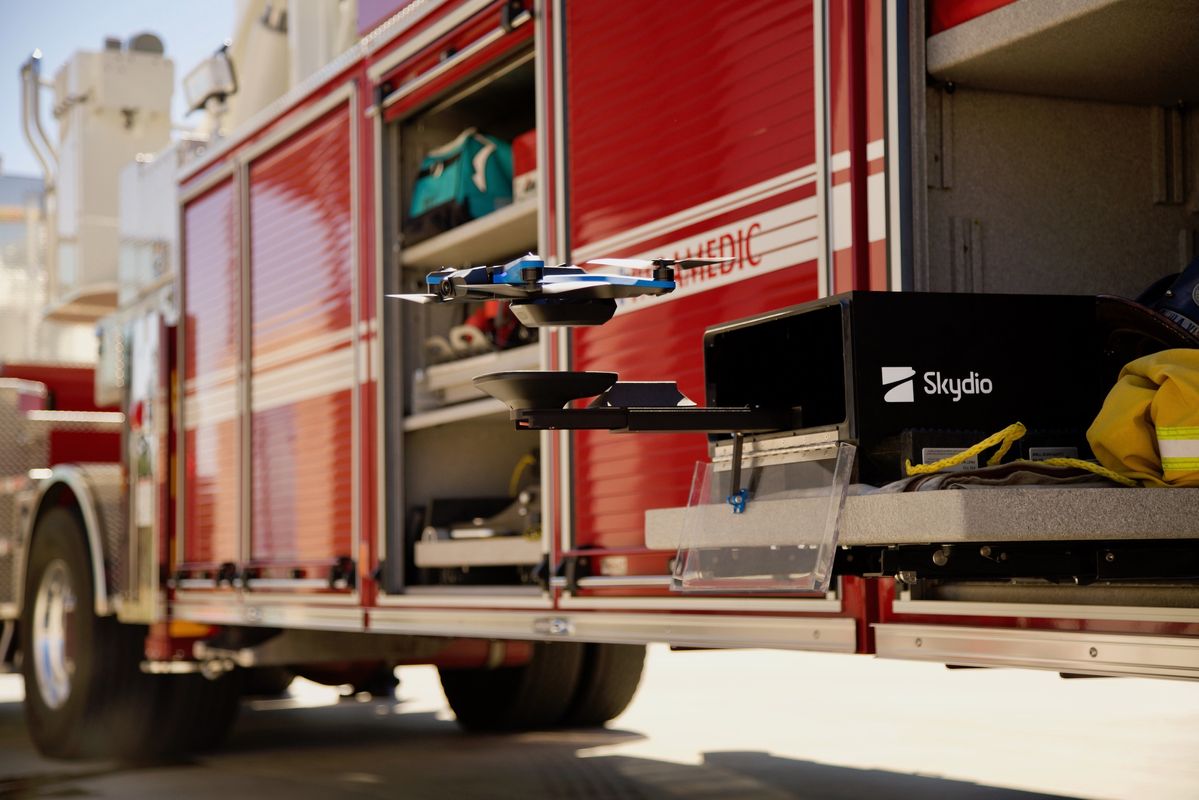The word “autonomy” in the context of drones (or really any other robot) can mean a whole bunch of different things. Skydio’s newest drone is probably the most autonomous drone that we’ve ever seen, in the sense that it can fly itself while tracking subjects and avoiding obstacles. But as soon as the Skydio 2 lands, it’s completely helpless, dependent on a human to pick it up, pack it into a case, and take it back home to recharge.
For consumer applications, this is not a big deal. But for industry, a big part of the appeal of autonomy is being able to deliver results with a minimum of human involvement, since humans are expensive and almost always busy doing other things.
Today, Skydio is announcing the Skydio 2 Dock, a (mostly) self-contained home base that a Skydio 2 drone can snuggle up inside to relax and recharge in between autonomous missions, meaning that you can set it up almost anywhere and get true long-term full autonomy from your drone.
Obviously, this is something that you can only do with the level of autonomy that you get with Skydio’s drone, because there’s no human pilot in the loop. From launch to landing on that alarmingly small platform, the drone can fly itself, although a remote human can step in if they want to at any point. Once the drone is safely back in its carry-on-size weatherproof box, the drone spends about an hour recharging (you’ll need to plug the box in for this), and then it’s ready to go again for a 23-minute flight. Conceivably you could have the drone in the air every hour and a half collecting data for you.
Skydio’s dock is an integral part of their first industry partnership with DroneDeploy, a mapping platform for drones. One potential application is that you could have a Skydio 2 drone living inside of a dock on a construction site, and then it’ll fly around the site as often as you need it to and send you back a map of how much things have progressed. Since the drone is always on-site and ready to go and doesn’t need to coordinate around a human operator, it can give you data on-demand in near-real time, or even after the fact: Tell it to fly every day, and then if you want to know what happened a week ago, the data will be there—no human involvement means that the cost to collect data is low enough that there’s no reason not to just do it pretty much constantly.
Well, there’s one reason not to just do it all the time, which is that in the United States it’s probably not allowed by the Federal Aviation Administration (FAA). We asked Skydio about this, and here’s what their CEO Adam Bry said:
“Under current regulations a Beyond Visual Line of Sight (BVLOS) waiver would be required. We think that a small, light, safe drone with advanced navigation and collision avoidance is an excellent candidate for persistent autonomous operation. Our general view is that it’s our responsibility to establish that the system satisfies all relevant safety and logistical concerns, and work with regulators to roll this technology out responsibly.”
The FAA does grant a fair number of waivers like these, and as Bry says, Skydio has a platform that they can (hopefully) show to be safe and reliable enough that the FAA will be cool with it. But this is yet another case where regulation is falling behind technology, and it means that you can’t just start using this system for your business without having to jump through some government hoops first. This is the problem with being a company that’s so far ahead of the curve, I guess—sometimes you have to wait for the rest of the world to catch up.

Skydio also sees its dock system as being valuable for first responders, where real-time data from a drone can potentially save lives. Instead of someone on-scene having to devote their attention to drone management. In these cases, having a person intermittently in the loop to request specific views might be a more typical use case, but not having to worry about takeoff or landing or flying would make things much more efficient: you can just ask for the data you want and the drone will provide it, and it won’t bother you about anything else.
We’re told that Skydio will announce pricing of the Skydio 2 Dock when they have general availability early next year.
[ Skydio ]
Evan Ackerman is a senior editor at IEEE Spectrum. Since 2007, he has written over 6,000 articles on robotics and technology. He has a degree in Martian geology and is excellent at playing bagpipes.




